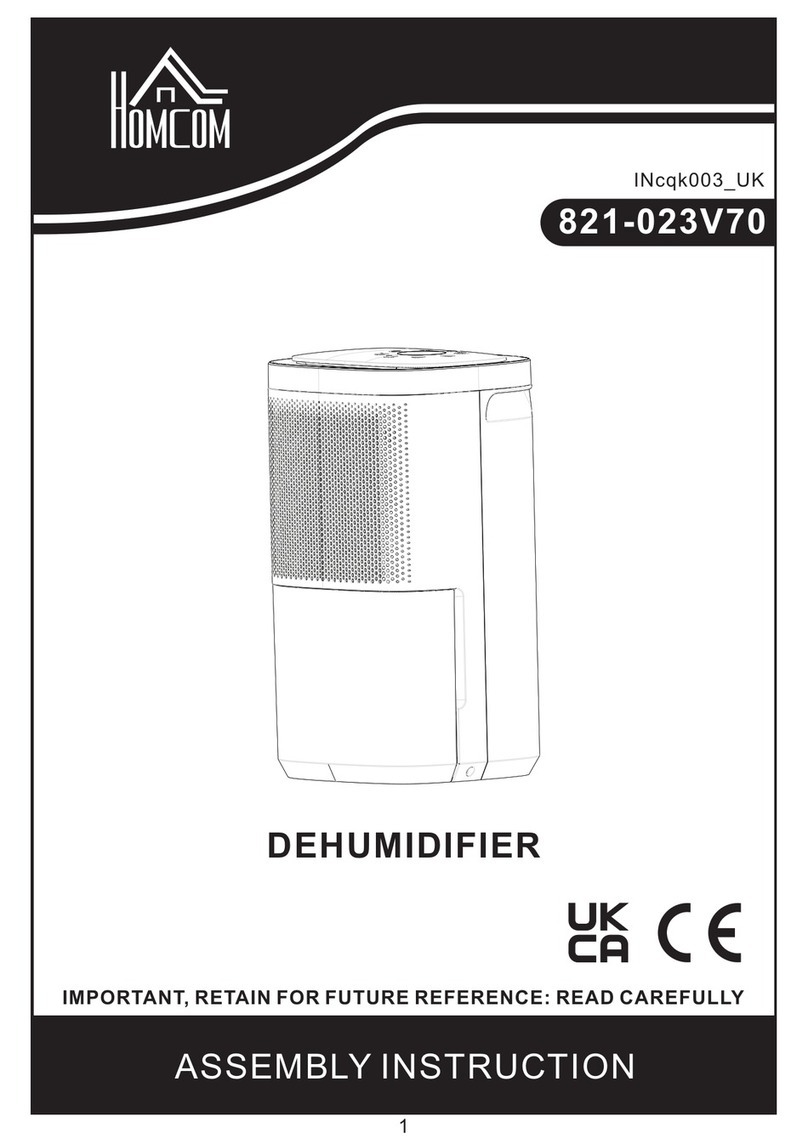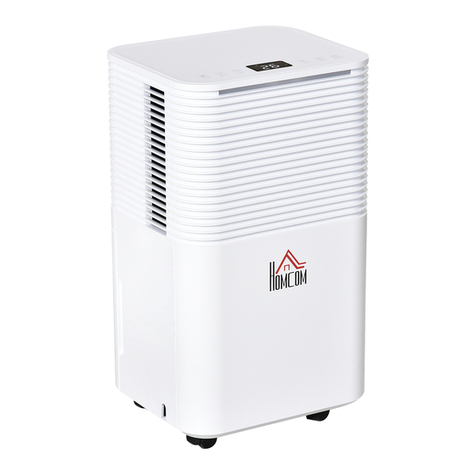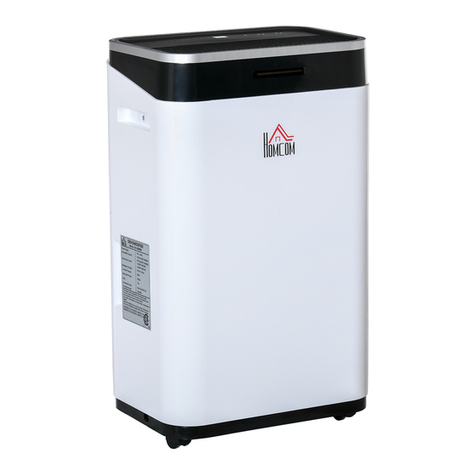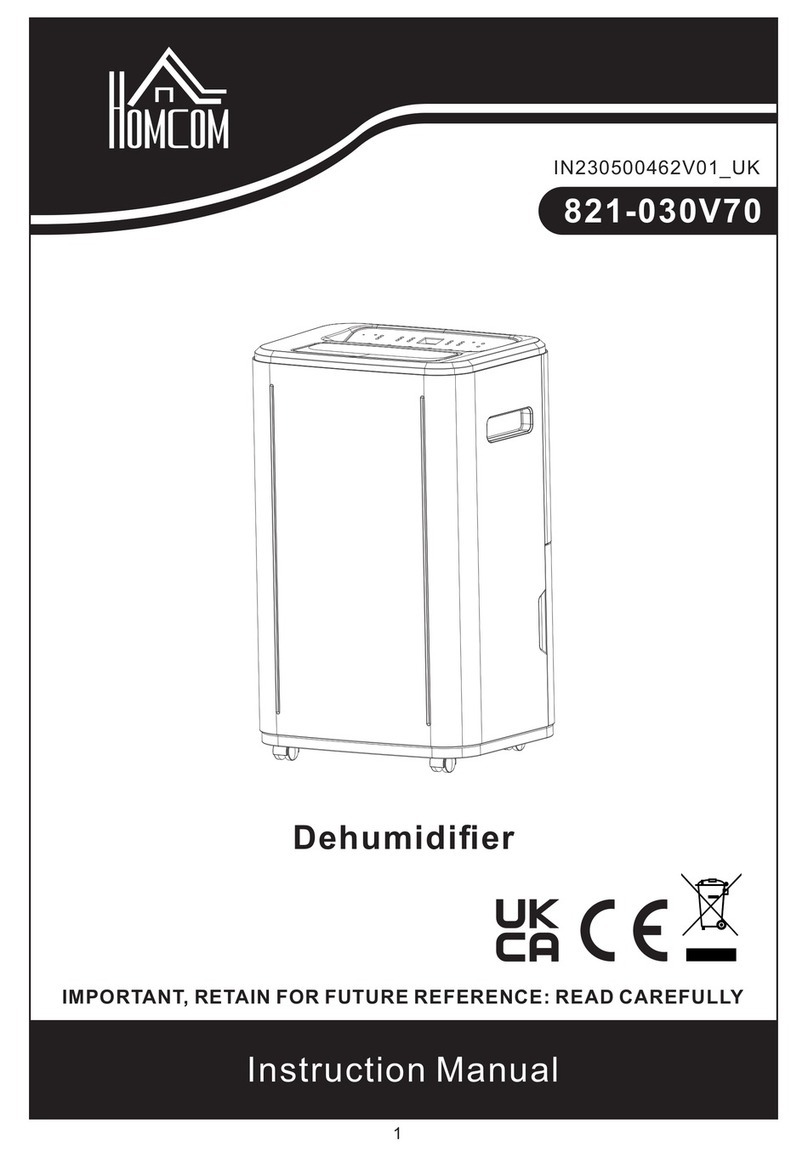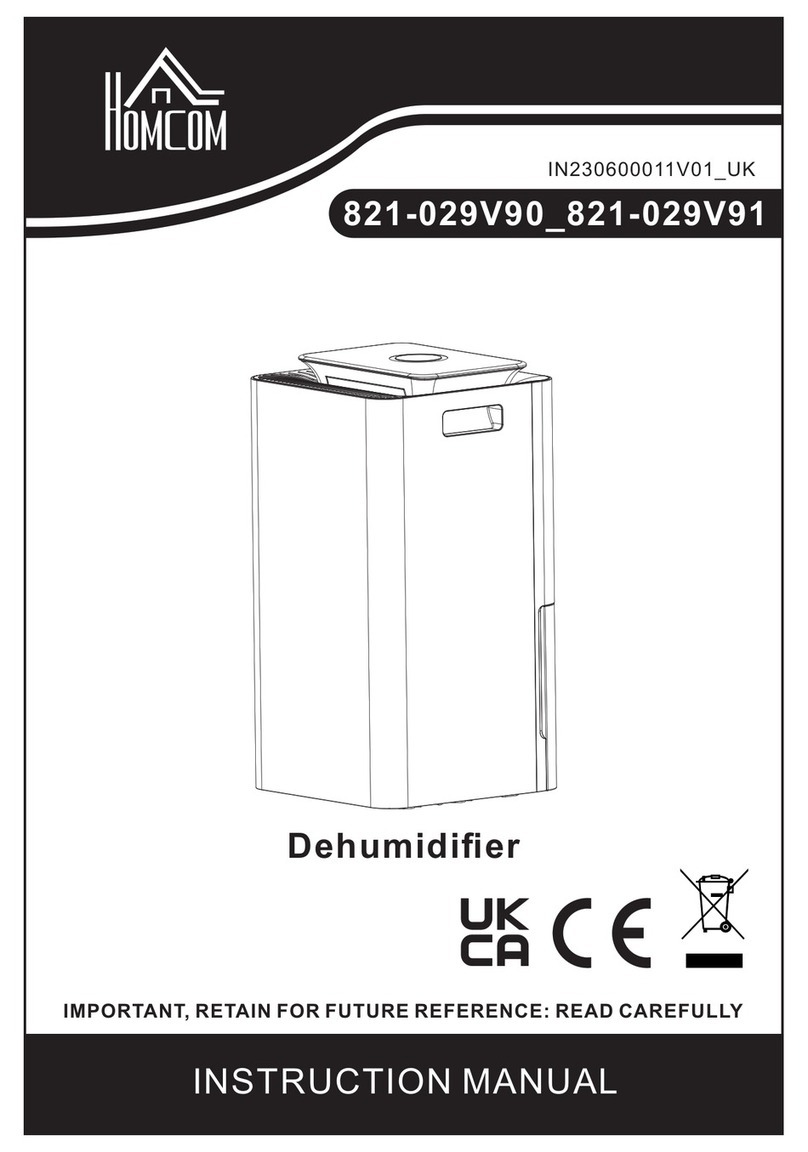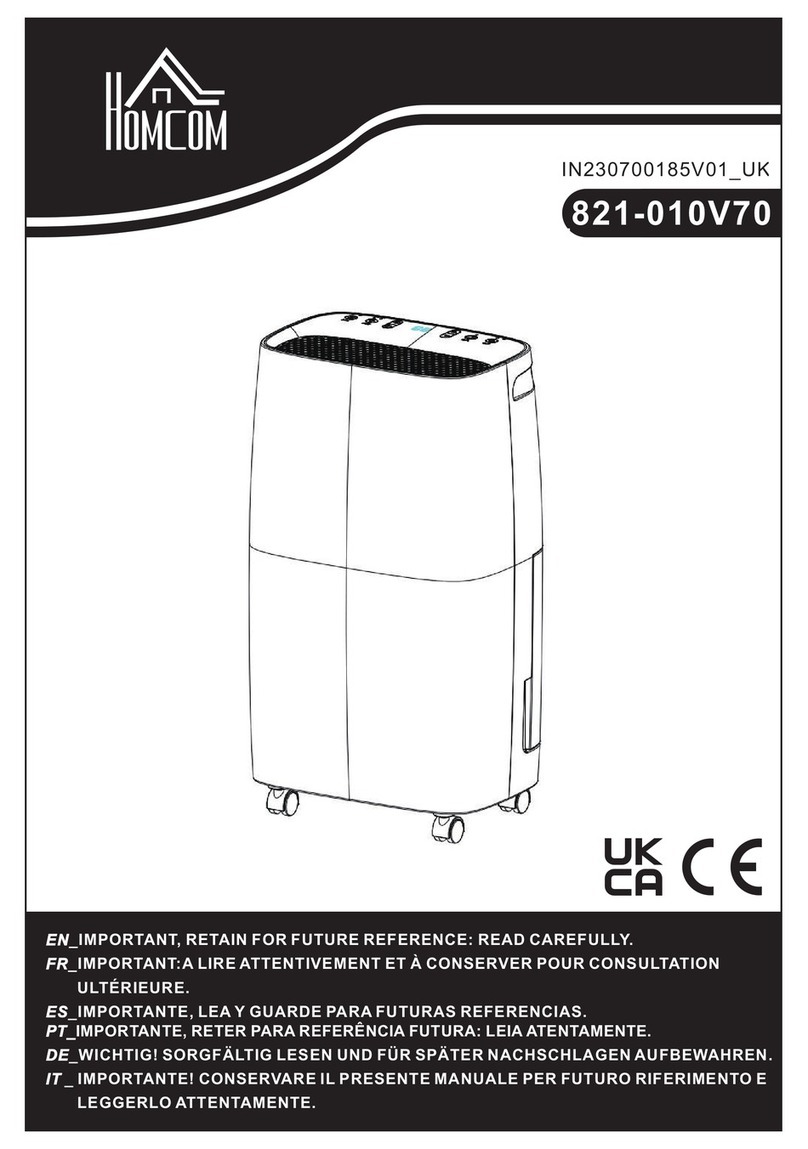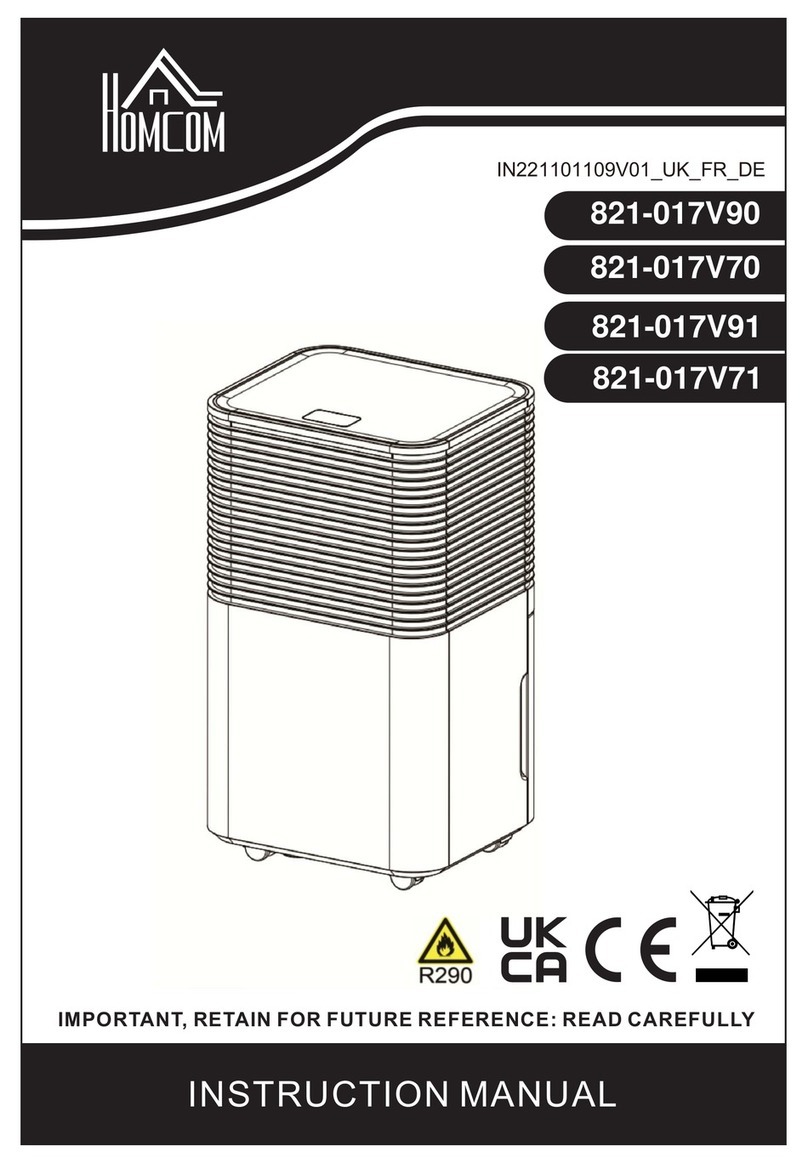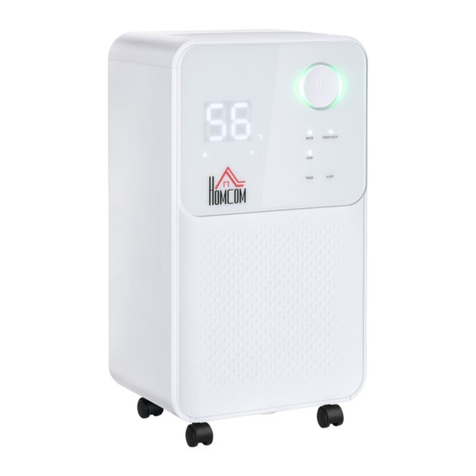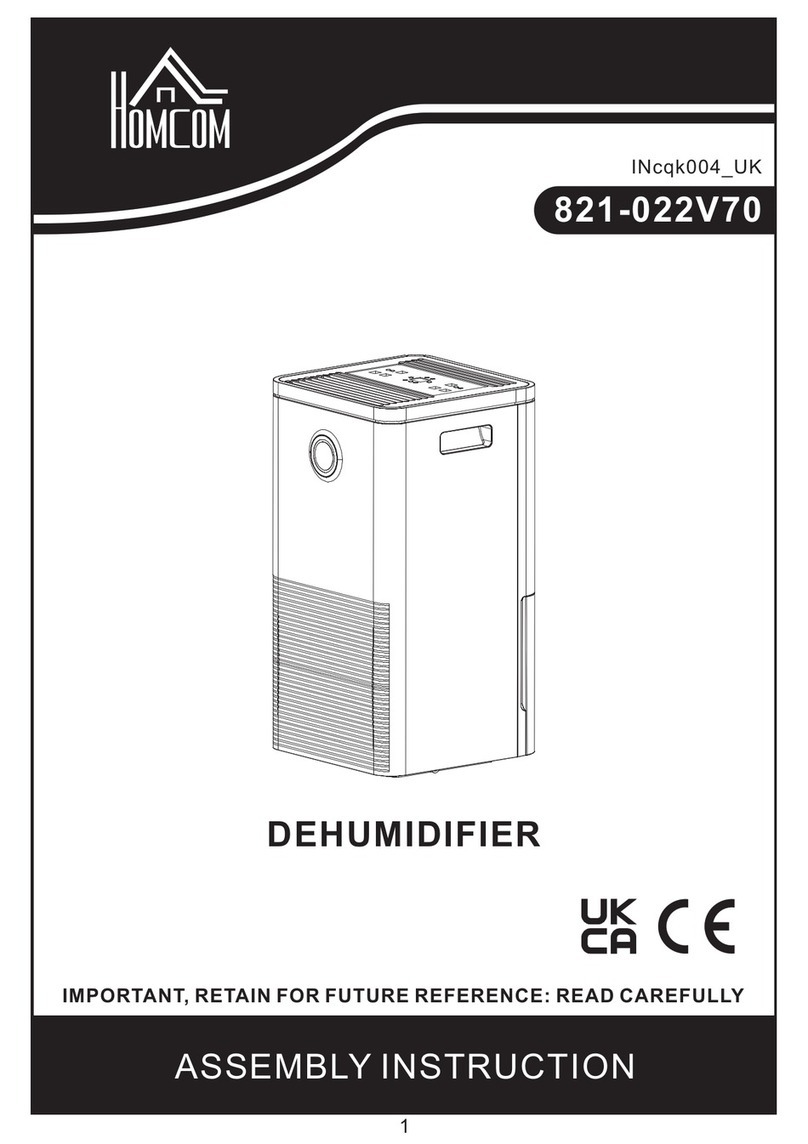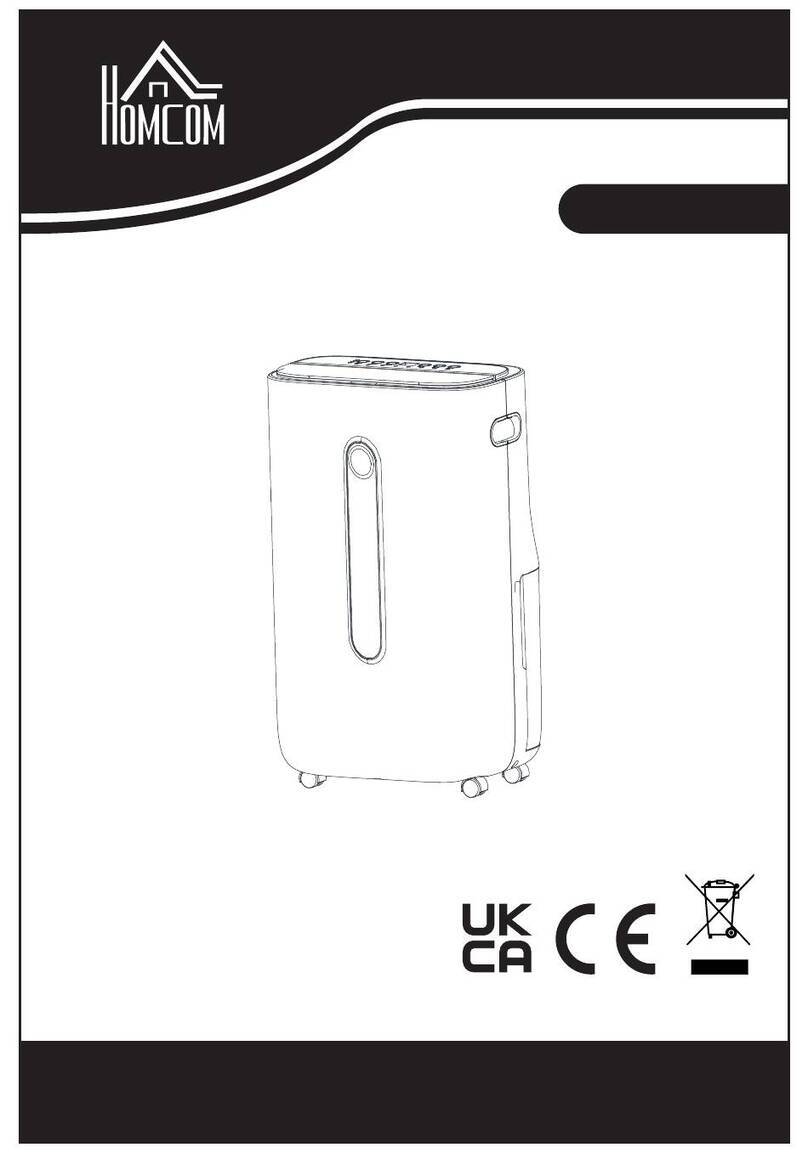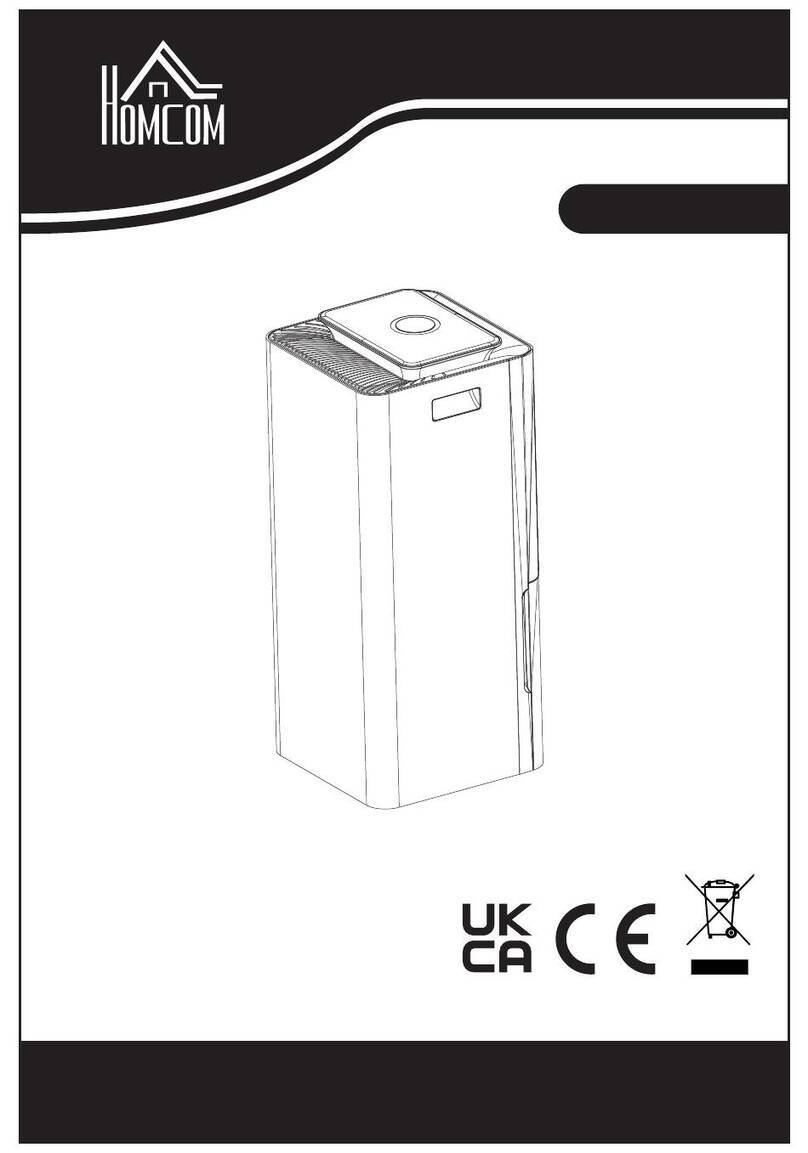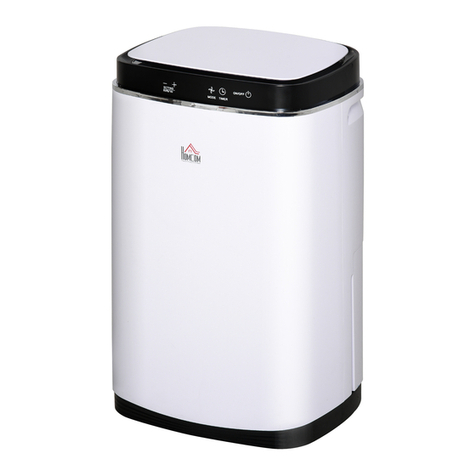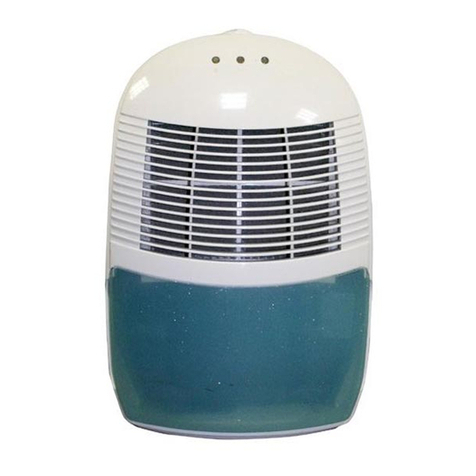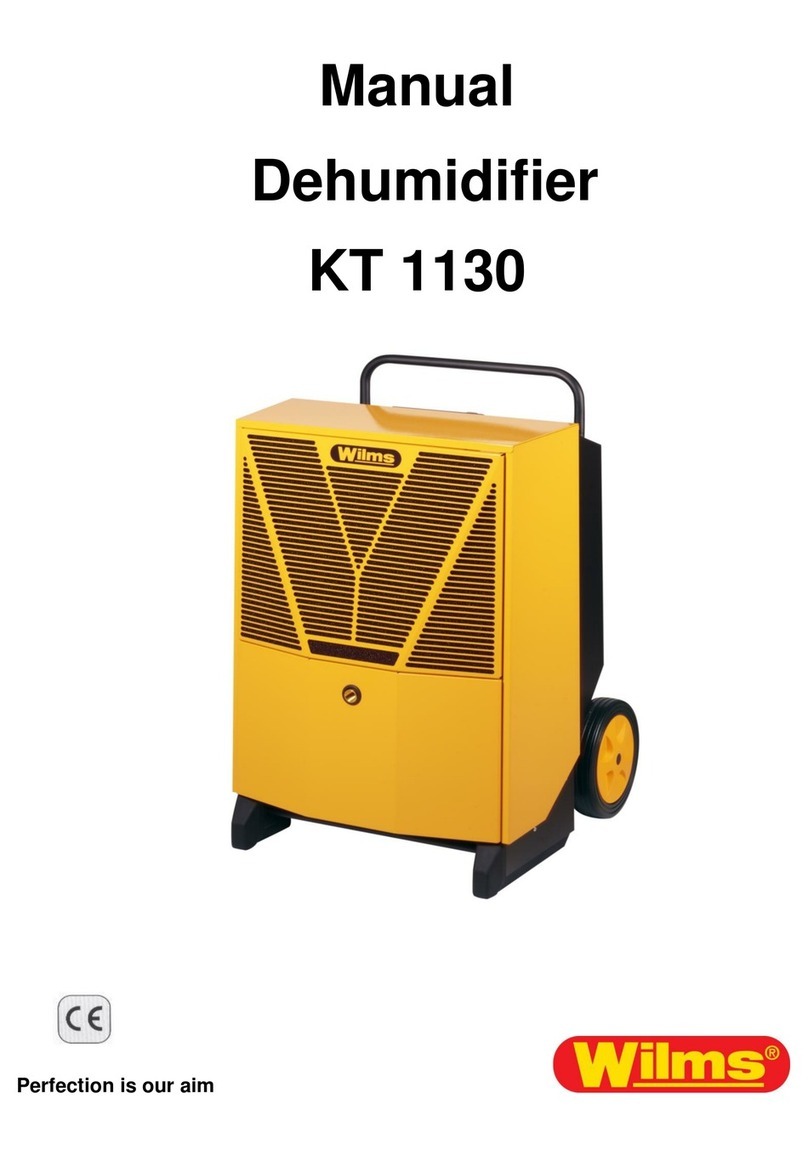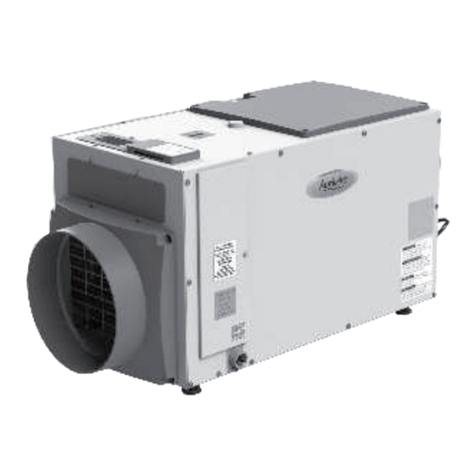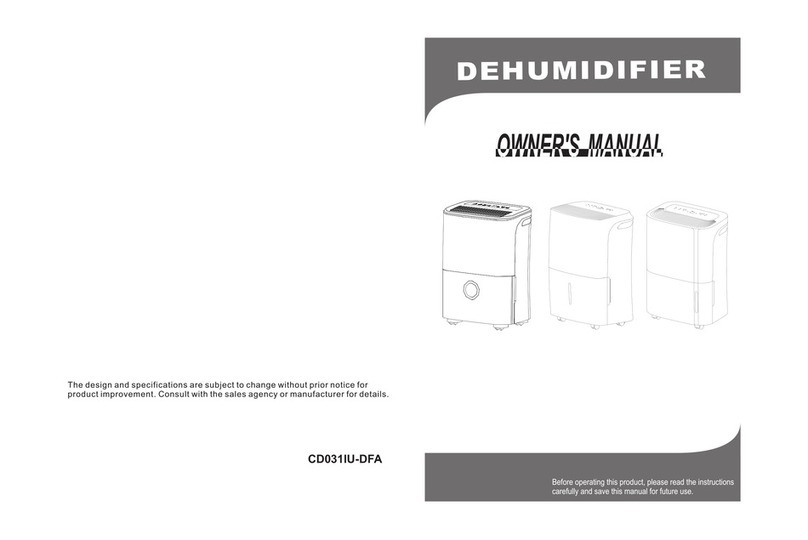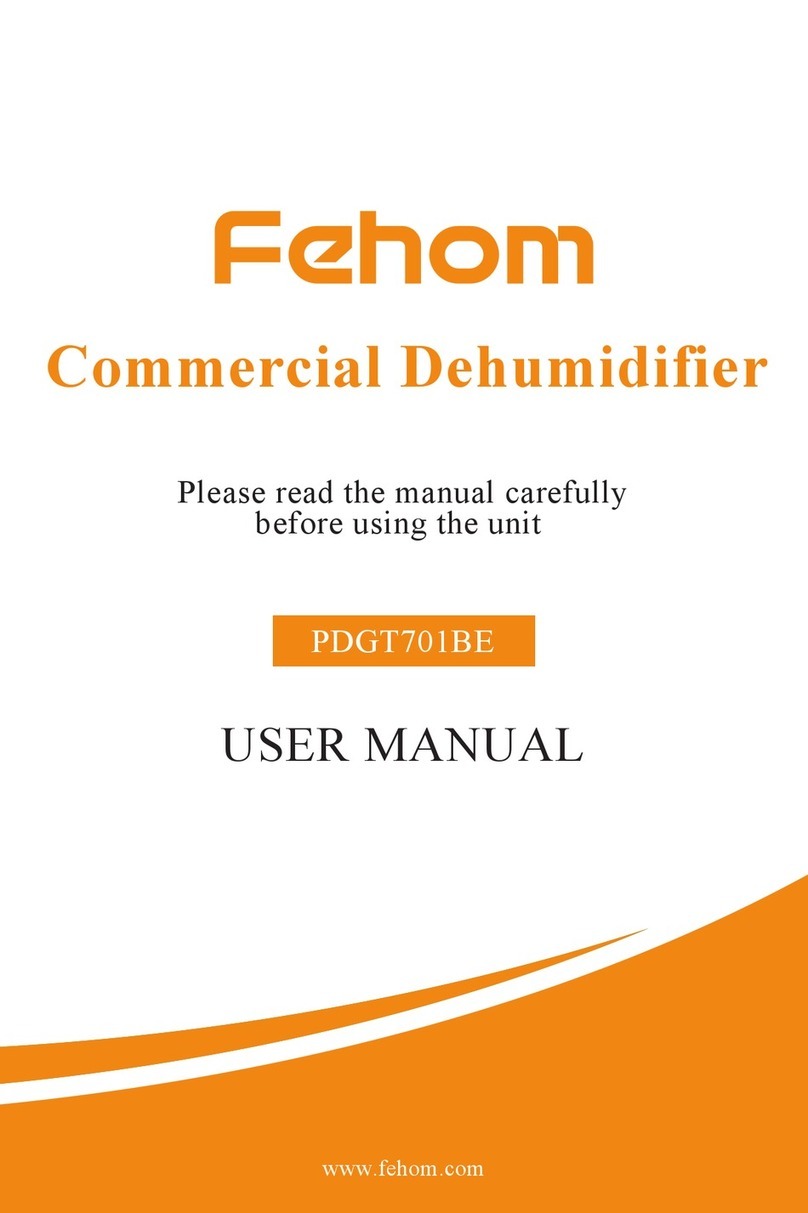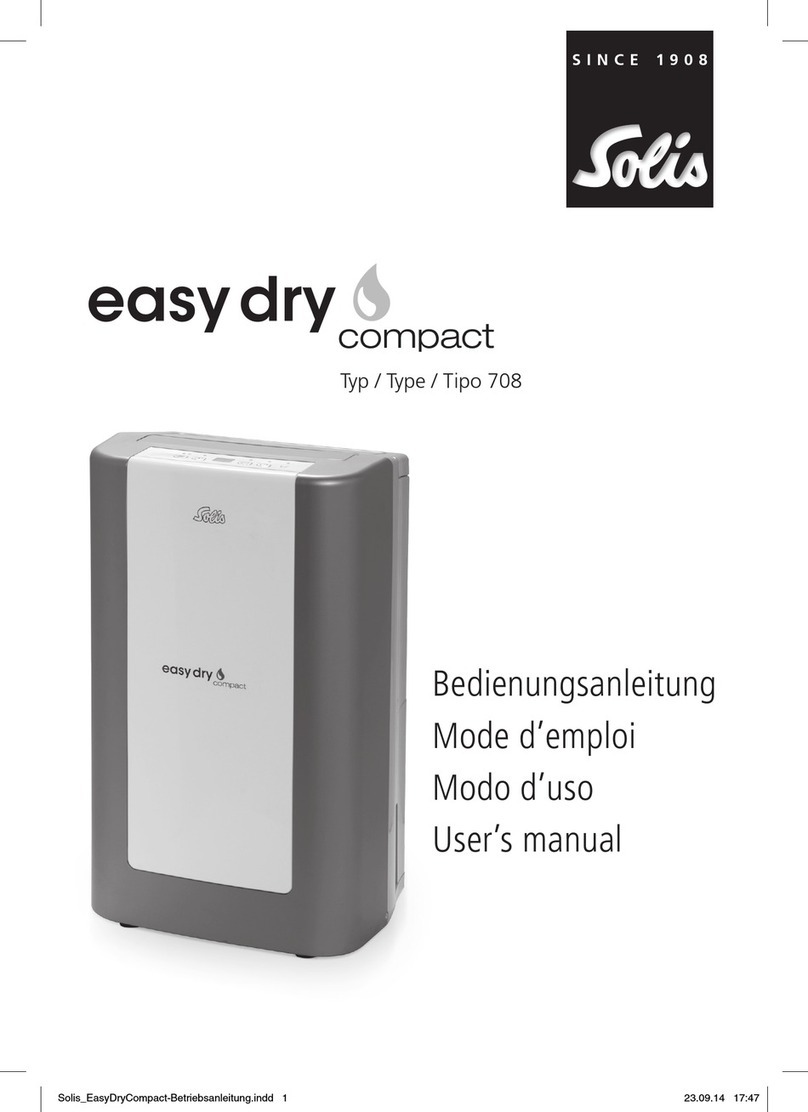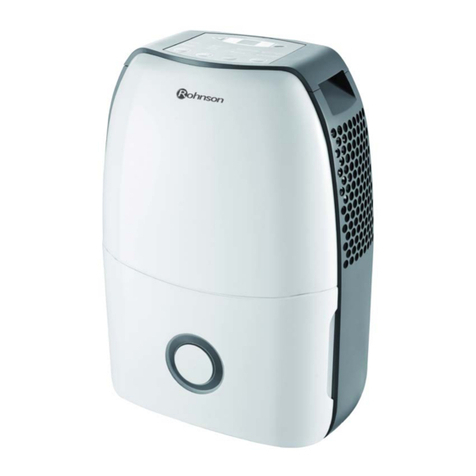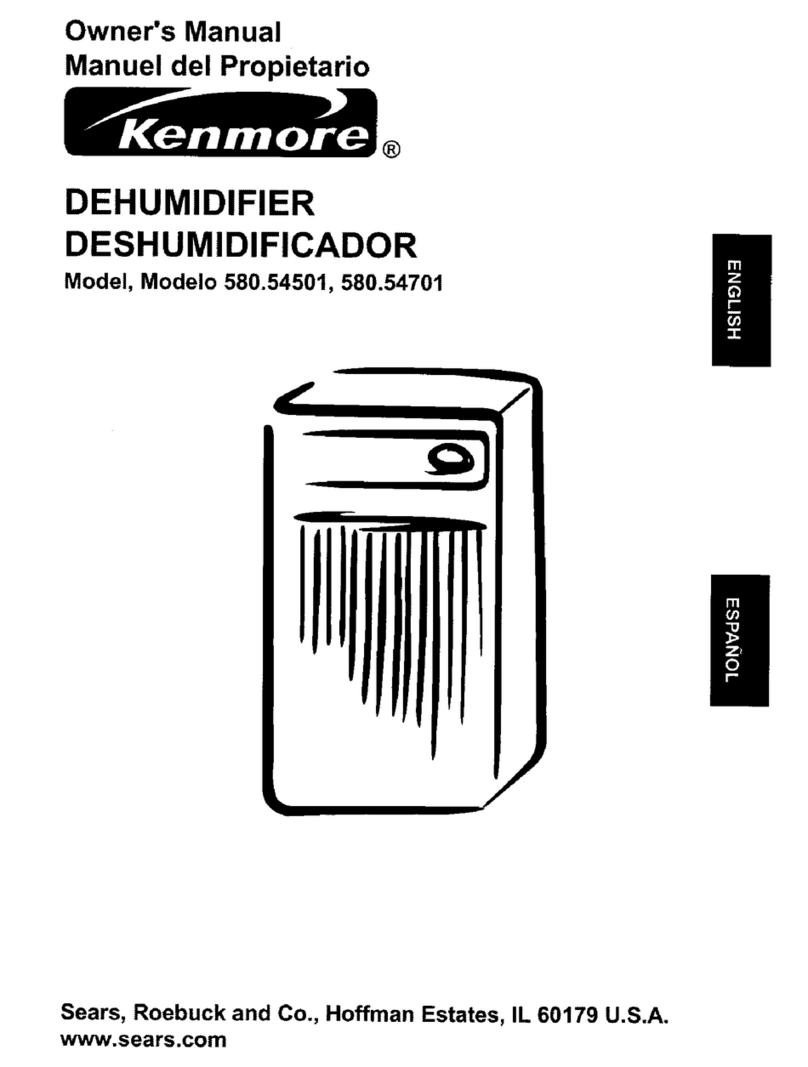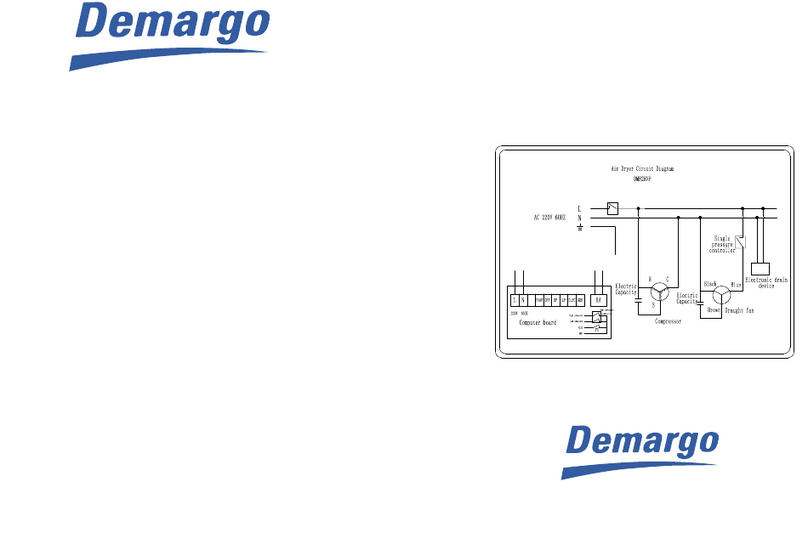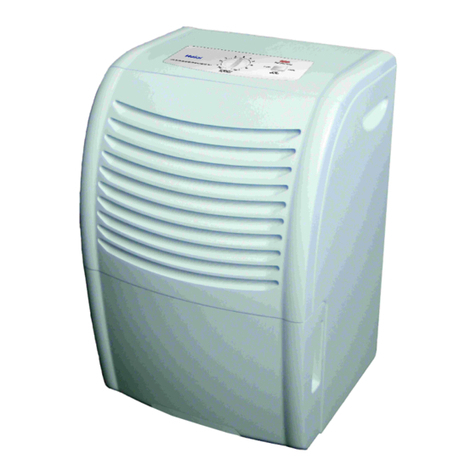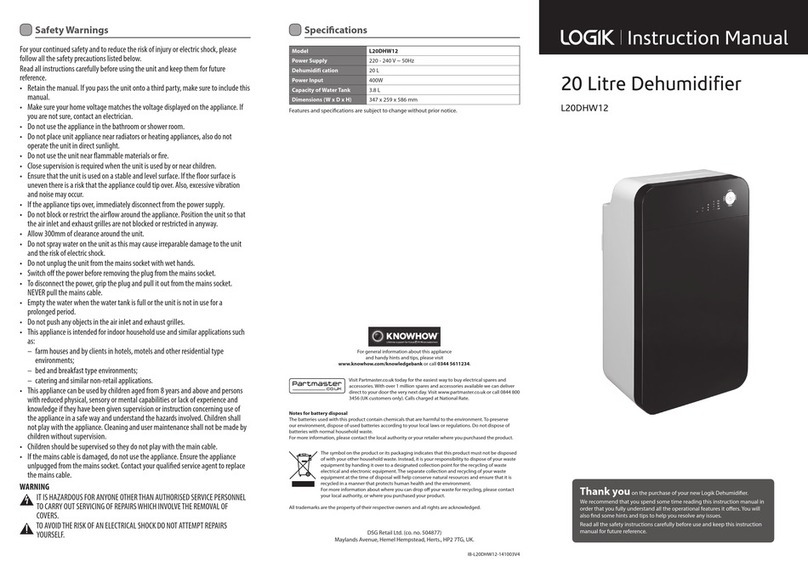
4
● After the dehumidifier is installed, ensure the power plug is intact and firmly plugged
into the power outlet. Place the power cord neatly to prevent someone from tripping
over it or pulling it out of the socket.
● Do not put any object into the air inlet and outlet of the dehumidifier. Keep the air inlet
and outlet free from obstruction.
● When installing drainage pipes, ensure they are properly connected and are not
twisted or bent.
● When moving the appliance, keep it in an upright position.
● Keep the appliance away from gasoline, flammable gas, stoves and other heat
sources.
● Do not disassemble, overhaul or modify the appliance on your own. This can cause
the machine to malfunction and may harm individuals or property. For damages or
failure to the appliance, get the manufacturer or a professional to repair it. Attempting
to repair the machine yourself can be dangerous.
● Do not pull the cord to turn off the appliance.
● To prevent water or other liquids from spilling into the air conditioning, do not place
cups or other objects on the appliance.
● Do not use insecticide sprays or other flammable substances near the dehumidifier.
● Do not clean this appliance with chemical solvents, such as gasoline or alcohol. To
clean the appliance, you must disconnect it from the power supply first, then clean it
with a slightly damp cloth. If it is really dirty, scrub the appliance with a mild detergent.
● Under guided supervision, this appliance can be used by children aged eight years
and above, provided they understand the potential risks and hazards. Under guided
supervision, this appliance can be used with persons with disabilities or persons
without experience, provided they understand the potential risks and hazards.
● Damaged supply cords must be replaced by the manufacturer, its service agent or
similarly qualified personnel to avoid hazards.
● Install this appliance following national wiring regulations.
Transportation, marking and storage for units
● Transport: Comply with all transport regulations when transporting equipment
containing flammable refrigerants.
● Marking: Comply with local regulations for marking equipment with signs, which
indicate the presence of flammable refrigerants.
● Disposal: Comply with national regulations for the safe disposal of equipment
containing flammable refrigerants.
● Storage: Store equipment following manufacturer's instructions, ensuring safe and
effective operation.
● Storage of packed equipment: Protect the equipment inside the package from
mechanical damage, so it does not leak.
